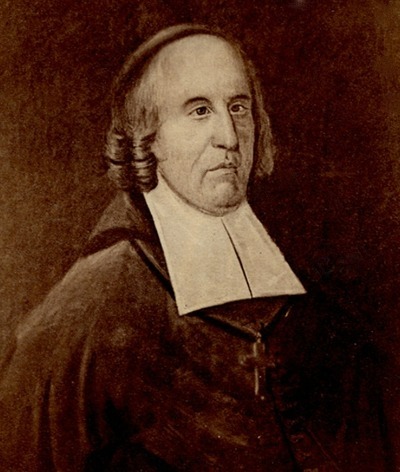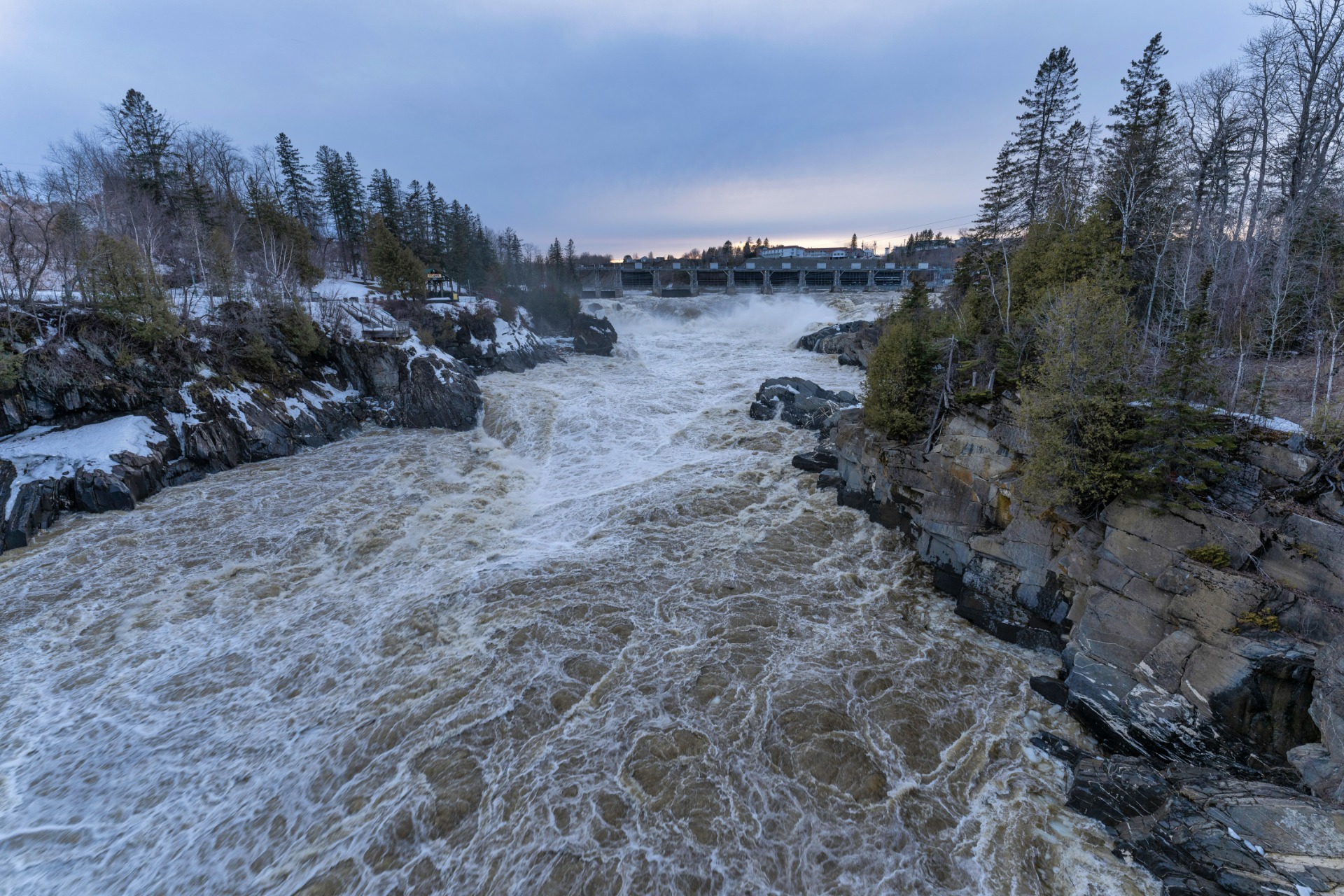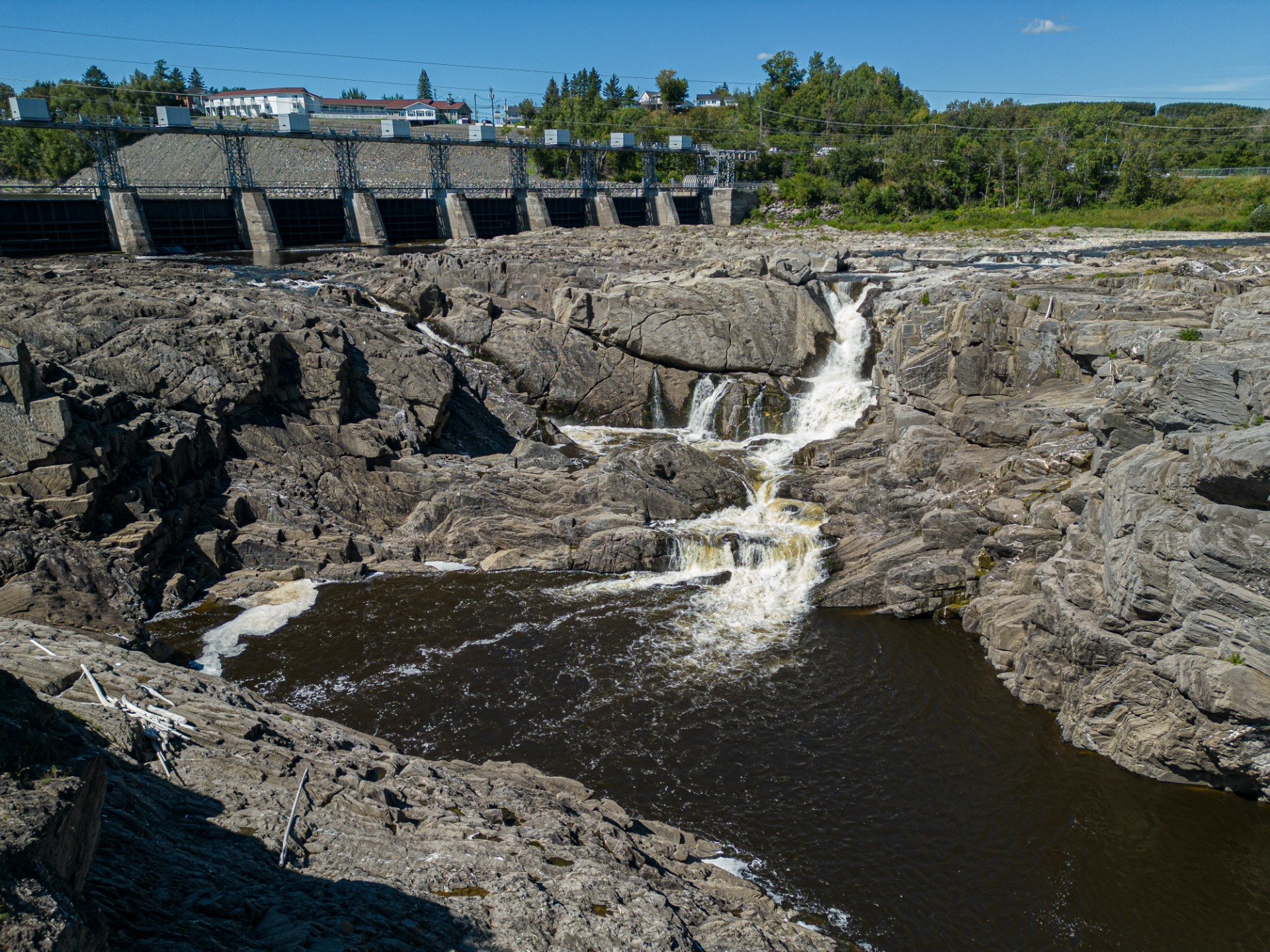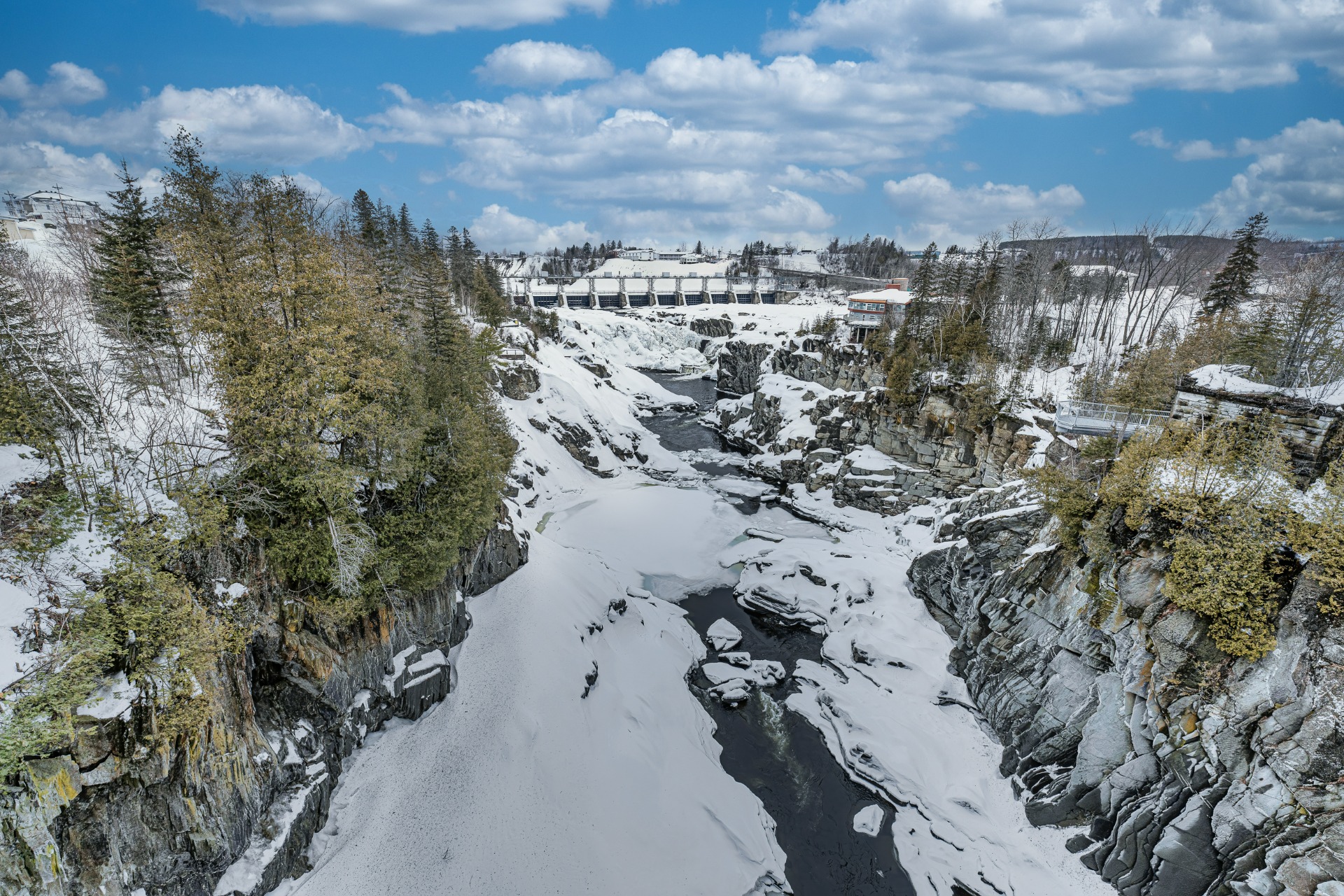
Waterfalls

One of the outstanding scenic features of the Saint John River are the waterfalls situated in Grand Falls. No description or illustration will be enough to give a fair idea of the majesty of these waterfalls. There are seventy-five feet (75') of direct fall and forty-five feet (45') of cascades.
The main waterfalls are almost perpendicular. At its base, there is a fragment of rock on which the water rumbles incessantly, and from which rises a dense column of spray. When sunlight falls on the moving spray, a splendid rainbow sparkles above the wild, foaming waters below. It is in the spring that the volume of the waterfalls is at its peak at an average of 1650m³, showcasing the Saint John River above a rocky ledge that plunges violently into the gorge, with a deafening hustle and bustle creating an exciting spectacle.

In the spring, 90% of Niagara Falls' volume passes through cataracts in Grand Falls. Grand Falls waterfalls has the highest maximum flow in Canada after Niagara Falls.
Water can rise as high as vegetation along the gorge walls in the spring. During the dry season, the falls themselves can be disappointing for some due to low water levels. However, this low water flow exposes the rock formations of the falls and gorge, which is quite fascinating. Only the runoff of Little River descends the chasm, as it makes its way over the sun-baked rocks in a series of small cascades.
History of the waterfalls



How the waterfalls were created?
Waterfalls form where the bed of a watercourse is cut by a slope that is vertical or almost. The waterfall becomes a cascade when the water follows a series of small landings, rapids form when the agitated stream follows a steep slope but remains in its bed and a cataract is a waterfall with a large flow of water.
Falls created by a geological accident
These falls are the result of a natural rupture in the profile of the watercourse resulting from a geological fault, glaciation, uplift of plateaus, springs opening canyon walls or earthquakes. https://www.thecanadianencyclopedia.ca
For some 2.6 million years, the Earth has been experiencing cycles of glaciation. It alternates between drastic drops in temperature, where a large part of the continent freezes, and warming, without scientists understanding exactly why our planet is cooling in this way. Although these cycles are related to the orbit that the Earth makes around the Sun, periodically, the Earth receives less solar radiation.
https://www.futura-sciences.com
-y6ku610.gif?alt=media&token=8dec55de-ebfb-47b5-99f1-c2e474c3762d)
Glacial evolution and stratigraphy of northwestern New Brunswick. During the Upper Wisconsinien, two major glacial movements characterized northwestern New Brunswick and the surrounding area: a first phase in which glacial movements were determined by the interaction of flows from local accumulation centres and by the Laurentian glacial invasion, and a more recent phase in which a new pattern of glacial flow developed in response to the subsidence that followed the rise in sea levels.
During this last phase the ice divide, which was created in the Appalachians, extended from Estrie (Quebec), through Maine and New Brunswick, to Gaspésie.
The filling of the valley to a thickness of 60 m, which occurred in much of the Saint John drainage basin, preceded the last glaciation. This backfilling consists of glacial lake deposits and river flow and also includes a lower penultimate till set up by a glacier that moved first eastward and later probably southeasterly.
The terraces along the Saint John, south of Grand Falls, are essentially forms of erosion. These terraces of post glacial origin were formed at the same time as the falls and gorge in Grand Falls.
http://www2.ggl.ulaval.ca/
Oh my, that was lots of information!


The first written description of the Grand Falls' waterfalls:

Abbé Saint-Vallier's first sojourn in Canada lasted 18 months. In spring of 1686, he departed, accompanied by two priests and a small escort to distant Acadia. Without even waiting for the ice to melt, they went from river to river, from lake to lake. Sometimes, they had to break the ice to get the canoes through. For a moment they thought they would die of hunger. Then, came summer, the unbearable bites of mosquitoes, the humid heat. Wherever they met French and Indians, Bishop Saint-Vallier preached, catechized, blamed, and praised. Bishop de Saint-Vallier ate little, barely slept, and worked incessantly.
Here is the description translated in english below of the falls as seen by Bishop de Saint Vallier during his passage in 1686. The description appeared in "Estat présent de l'Église et de la colonie Française dans la Nouvelle-France" Published in France in 1688 and subsequently in 1856 in Quebec.

''The next day, the seventeenth of May, we saw the place called the grand-Sault Saint Jean-Baptiste, where the Saint John River making from the top of a very high rock a terrible waterfall into an abyss, forms a fog which steals the water from view, and makes a noise which warns the navigators from afar to get off their canoes. It was there that a man coming out of Acadie, where he had been sent by Mr. Intendant, gave me one of his letters, and I took the opportunity to give news also to the Governor worried about us.''
You will find a monument in his honor in the Lovers Lane, which is located on the right after crossing the Ron Turcotte Bridge. It is a historic monument given to us by the Government of Canada and there are very few of them in the province.
In the early 1800s, the population grew suddenly thanks to the commercial efforts of Sir John Caldwell, who in the late 1830s brought in settlers to operate his sawmill day and night. He saw the potential of using the force of the water coming down from the waterfalls. He had a canal dug on the west side of the falls, creating a rocky islet where he built a flour mill.
He used flowing water to turn the mill wheel and make ground flour. This rocky island was once known as Malabeam Island. The rocky island is still visible to this day.
Pictures of the waterfalls in all 4 seasons



